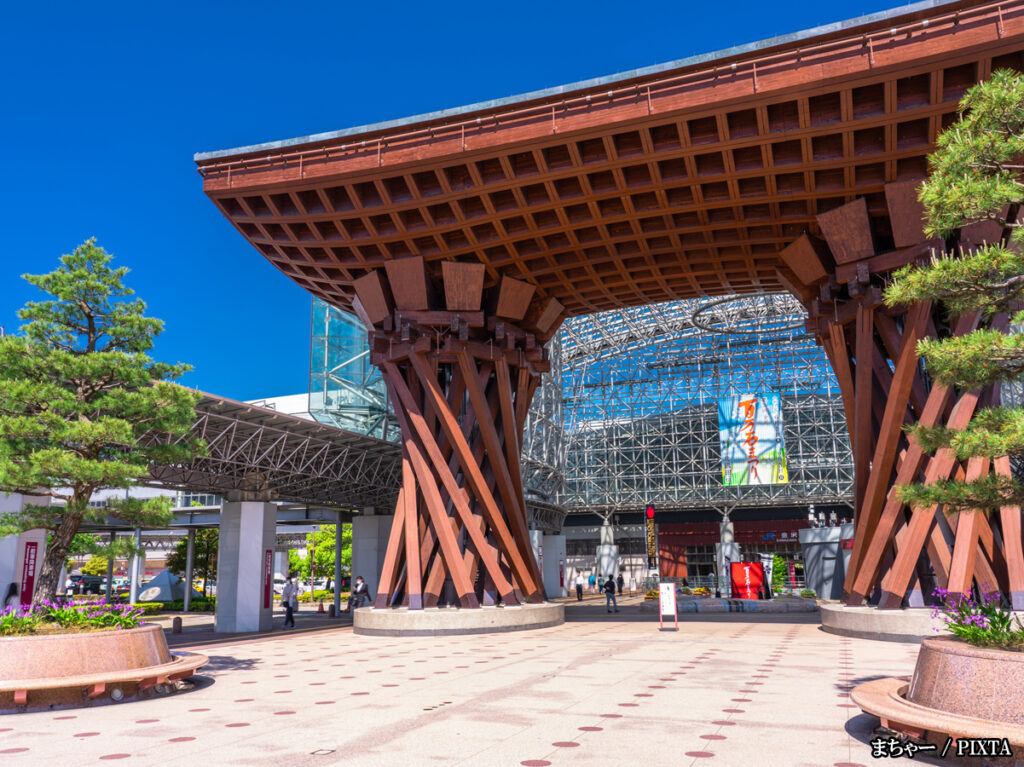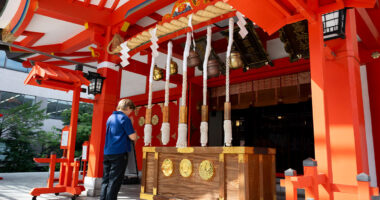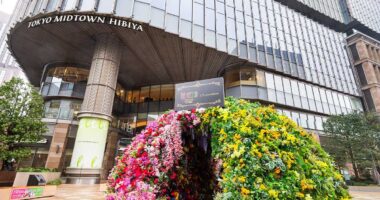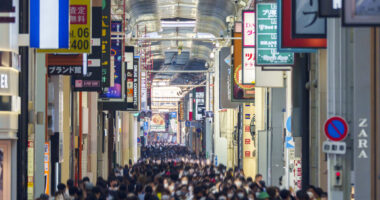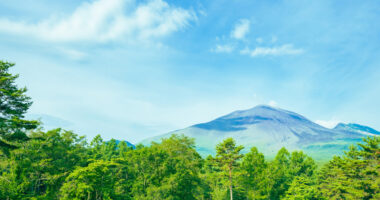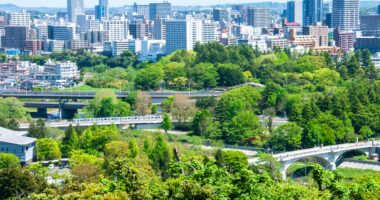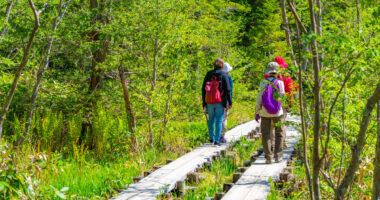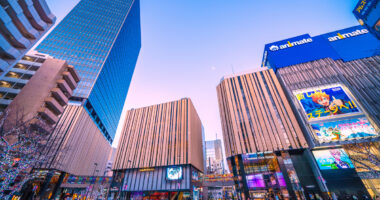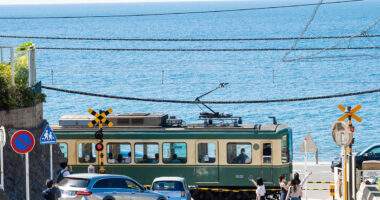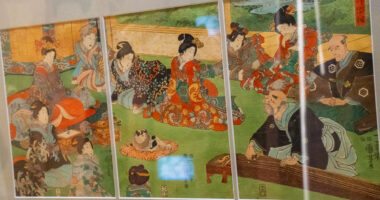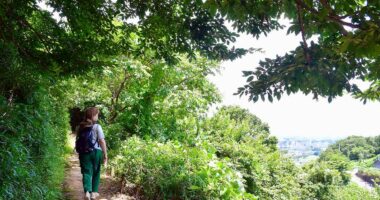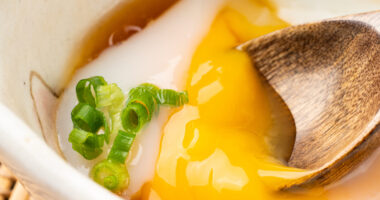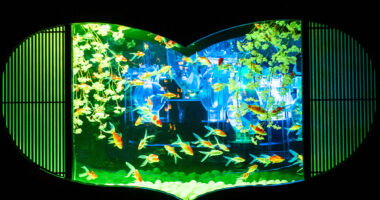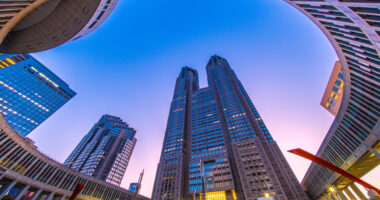Ishikawa Prefecture, nestled along the Sea of Japan coast, offers an elegant blend of tradition, artistry, and natural splendour. From the historic streets of Kanazawa to the rugged beauty of the Noto Peninsula, this region invites travellers to discover an authentic side of Japan.
Whether you are exploring samurai legacies, soaking in hot-spring waters, or tasting local seafood, these must-see spots promise unforgettable experiences.
- Kenrokuen Garden: seasonal beauty in full bloom
- Kanazawa Castle: tracing samurai footsteps
- Higashi Chaya District: echoes of the Edo era
- 21st Century Museum of Contemporary Art: a modern surprise
- Ōmichō Market: Kanazawa’s kitchen
- Natadera Temple: nature and spirituality combined
- Kaga Onsen: hot spring retreat near Kanazawa
- Mount Hakusan: sacred peak and hiking paradise
- Wajima Morning Market: artisan vibes by the sea
- Noto Peninsula: scenic coastal culture
- Final thoughts
Kenrokuen Garden: seasonal beauty in full bloom
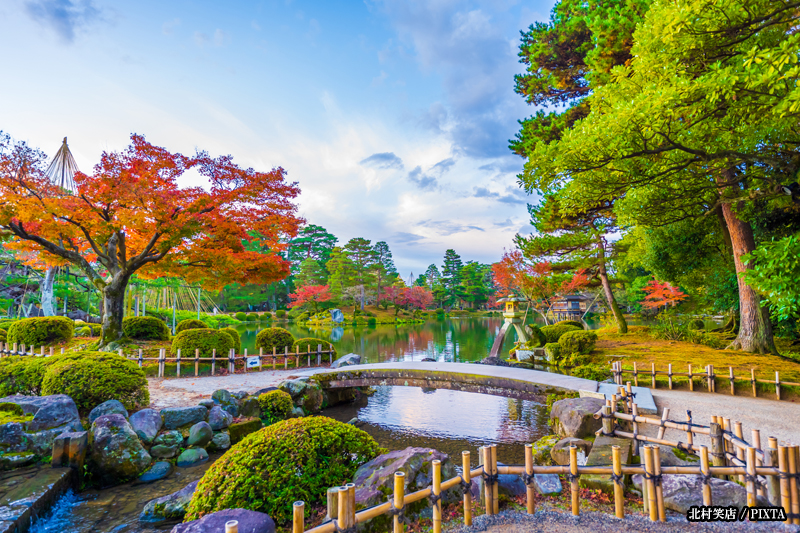
Photo for illustrative purposes
One of Japan’s “Three Great Gardens,” Kenrokuen in Kanazawa is famed for its six classical landscape elements: spaciousness, tranquillity, artifice, antiquity, water features and panoramic views.
Highlights
- Cherry blossoms in spring, irises in early summer, fiery maples in autumn and yukitsuri (snow-rope supports) in winter.
- Kasumigaike Pond and the iconic Kotoji-tōrō stone lantern.
Practical information
- Location: Adjacent to Kanazawa Castle Park
- Hours: 7:00–18:00 (1 March–15 October); 8:00–17:00 (16 October–end February)
- Admission: 320 JPY (adults)
- Access: 12 minutes by bus from JR Kanazawa Station (Kenrokuen-shita stop)
- Tip: Arrive early in the morning to enjoy peaceful strolls before tour groups appear.
Kanazawa Castle: tracing samurai footsteps
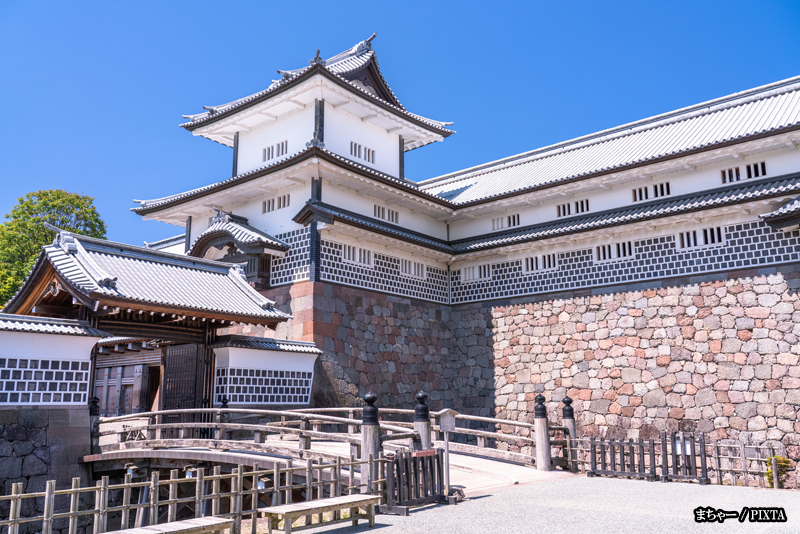
Photo for illustrative purposes
Just across from Kenrokuen lies Kanazawa Castle, the former seat of the powerful Maeda clan. Restorations such as Ishikawa-mon Gate and Gojukken Nagaya storehouse recreate the castle’s Edo-period grandeur.
Highlights
- Historical exhibitions and interactive displays on feudal-era architecture.
- Vast grounds perfect for a scenic walk, especially during cherry-blossom season.
Practical information
- Hours: 7:00–18:00 (1 March–15 October); 8:00–17:00 (16 October–end February)
- Admission: Free (grounds); 320 JPY (restored buildings)
- Access: Same route as Kenrokuen
- Tip: Combine the castle and Kenrokuen for a convenient half-day history loop.
Higashi Chaya District: echoes of the Edo era
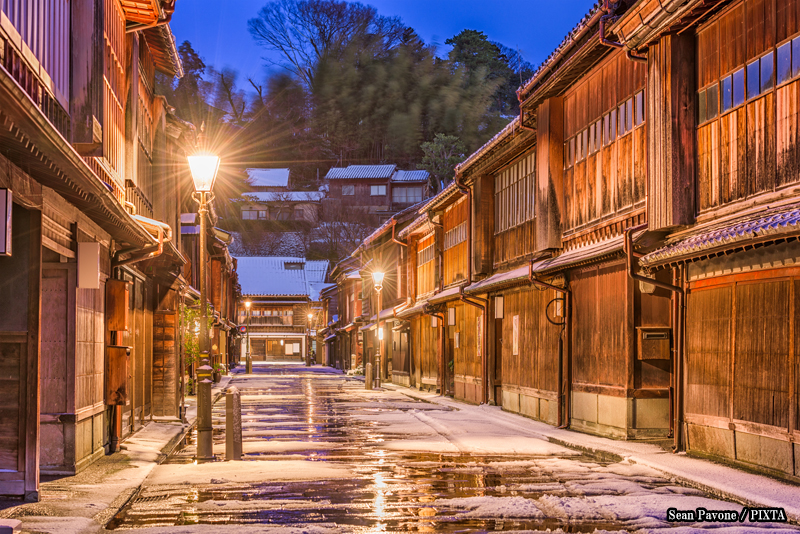
Photo for illustrative purposes
Step back in time at Higashi Chaya, Kanazawa’s best-preserved geisha district. The area is lined with wooden lattice-fronted chaya (tea houses), some of which still host geisha performances.
Highlights
- Tour the Shima or Kaikarō teahouses for a glimpse into geisha culture.
- Shop for gold-leaf crafts and sample sweets coated in edible gold.
Practical information
- Typical hours: 9:00–17:00 (shops and cafés vary)
- Access: 25 minutes on foot or 10 minutes by bus from Kanazawa Station
- Tip: Late-afternoon light offers warm tones and fewer crowds—ideal for photography.
21st Century Museum of Contemporary Art: a modern surprise
A short walk from Kenrokuen, this circular glass-walled museum offers a fresh contrast to Kanazawa’s historical core. Known for interactive exhibits and iconic installations like Leandro Erlich’s “Swimming Pool,” it attracts both art lovers and casual visitors.
Highlights
- Rotating international exhibitions
- Accessible public areas without admission fee
Practical information
- Hours: 10:00–18:00 (closed Monday)
- Admission: 450–1,200 JPY (varies by exhibition)
- Access: 10 minutes’ walk from Kenrokuen Garden
- Tip: Pair the museum with Kenrokuen for an old-and-new Kanazawa itinerary.
Ōmichō Market: Kanazawa’s kitchen
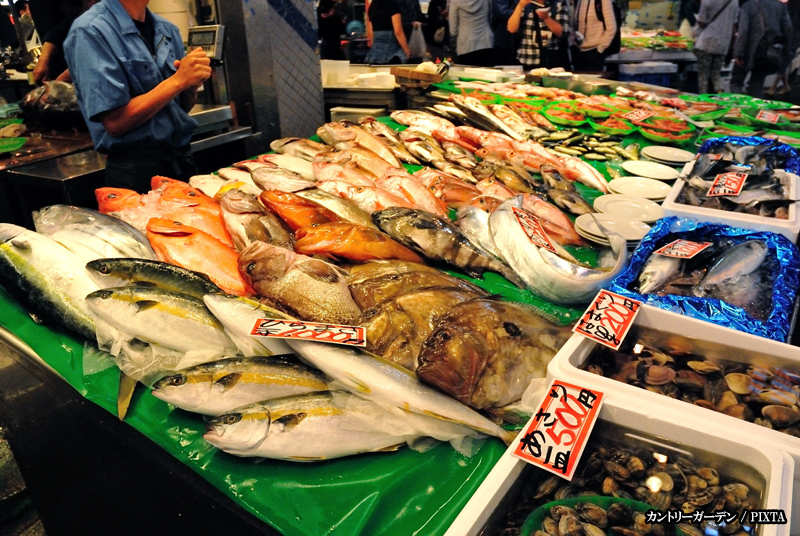
Photo for illustrative purposes
Ōmichō Market has served locals since the Edo period and remains Kanazawa’s go-to spot for fresh seafood, produce, and regional snacks. Come hungry—many stalls offer ready-to-eat delicacies.
Highlights
- Sushi bowls topped with snow crab, yellowtail and more.
- Local specialties like Kanazawa oden stew and sweet shrimp.
Practical information
- Hours: 9:00–17:00 (shop-dependent; some open earlier)
- Access: 15 minutes on foot from Kanazawa Station
- Tip: Arrive around 10:00 to catch maximum variety without the lunch rush.
Click here for the official Omimachi Market brochure (English version).
Related article
Interested in Kanazawa’s food scene beyond the market? Explore our article, “A Culinary Journey Through Kanazawa: Ishikawa’s Food Capital,” for more gourmet highlights.
Natadera Temple: nature and spirituality combined
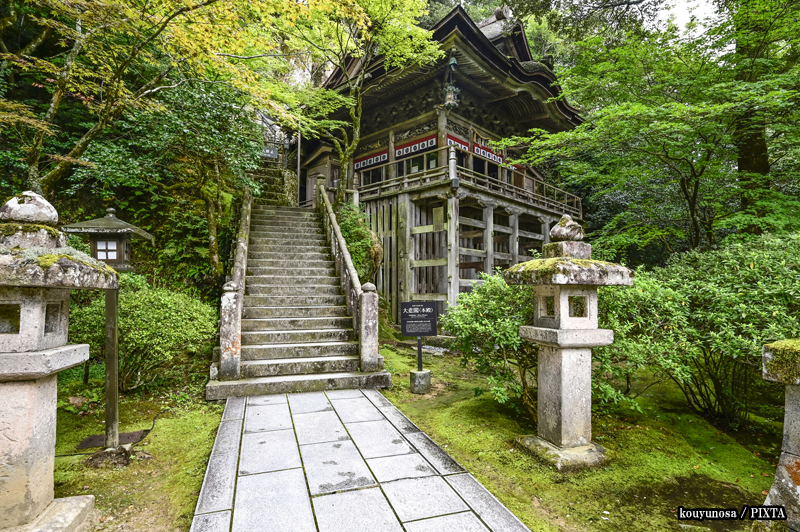
Photo for illustrative purposes
Located in Komatsu City, Natadera Temple is carved into rock cliffs and surrounded by forest. Founded in the 8th century, it harmonizes with its environment in a way reminiscent of famous spiritual centers like Nikko or Koyasan.
Highlights
- Clifftop temple halls, caves used for meditation, and seasonal gardens.
- A serene atmosphere ideal for reflection.
Practical information
- Hours: 8:30–16:45 (March–November); 9:00–16:00 (December–February)
- Admission: 600 JPY (adults)
- Access: 15 minutes by bus or taxi from JR Komatsu Station
- Tip: Visit in late October for brilliant foliage and quieter grounds.
Kaga Onsen: hot spring retreat near Kanazawa
Just south of Kanazawa lies the Kaga Onsen area, which includes several historic hot spring towns like Yamashiro, Yamanaka, and Katayamazu. Each offers a different flavor of relaxation, from ryokan (traditional Japanese inns) to scenic baths.
Highlights
- Public bathhouses in heritage buildings
- Hot spring waters believed to relieve fatigue and improve circulation
Practical information
- Access: 30 minutes by train from Kanazawa to Kaga Onsen Station plus local bus
- Tip 1: Overnight stays are recommended to fully enjoy the onsen experience
- Tip 2: For day-trippers, Yamanaka Onsen’s Kōroku-no-yu public bath is a great option.
Mount Hakusan: sacred peak and hiking paradise
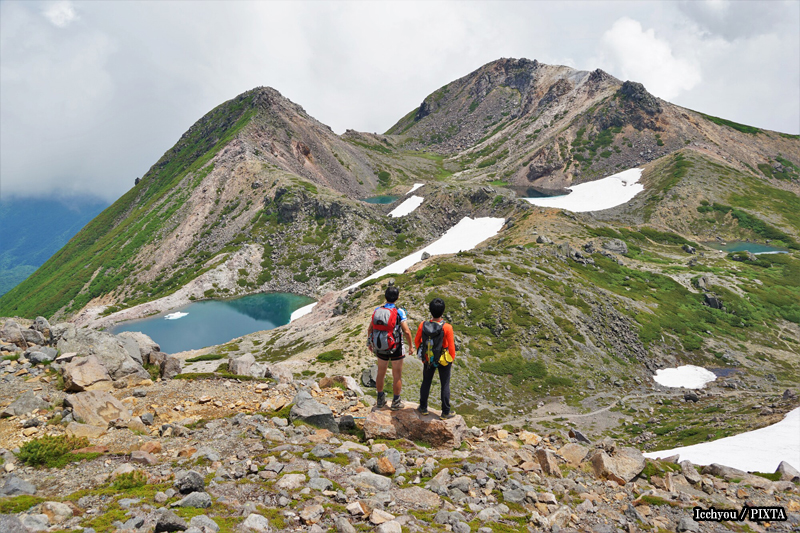
Photo for illustrative purposes
Mount Hakusan, one of Japan’s “Three Holy Mountains,” straddles Ishikawa and neighboring prefectures. Popular with hikers, it offers routes of varying difficulty, from gentle forest paths to overnight summit climbs.
Highlights
- Panoramic alpine views
- Subalpine flowers in summer, fall colors in October
Practical information
- Best time to hike: July–October (snow covers the trails outside this period)
- Access: Seasonal buses from Kanazawa to Bettōdeai Trailhead Rest House
- Tip: Summit hikers must file a mountaineering plan beforehand. You can download the English version in Excel or PDF, then either send it by fax to +81 76-225-1484 or submit it in person at places like the Ichinose Visitor Center or the Bettodeai Trailhead Resthouse
Wajima Morning Market: artisan vibes by the sea
Located on the Noto Peninsula, Wajima’s morning market is one of Japan’s oldest. Severely damaged in the 2024 Noto Peninsula Earthquake and the subsequent fire, the market has temporarily reopened at Power City Wai Plaza with around 30 shops. It continues to offer regional foods, Wajima lacquerware, and local conversation in a new location as the city rebuilds
Highlights
- Grilled squid skewers and freshly baked senbei.
- Lacquerware artisans demonstrating traditional techniques.
Practical information
- Hours: 8:00–12:00 daily
- Access: Approximately two hours by car from Kanazawa, or take the Wajima Special Express bus to Wajima
- Tip: Combine the visit with a coastal drive along the Noto Kongō shoreline.
Noto Peninsula: scenic coastal culture
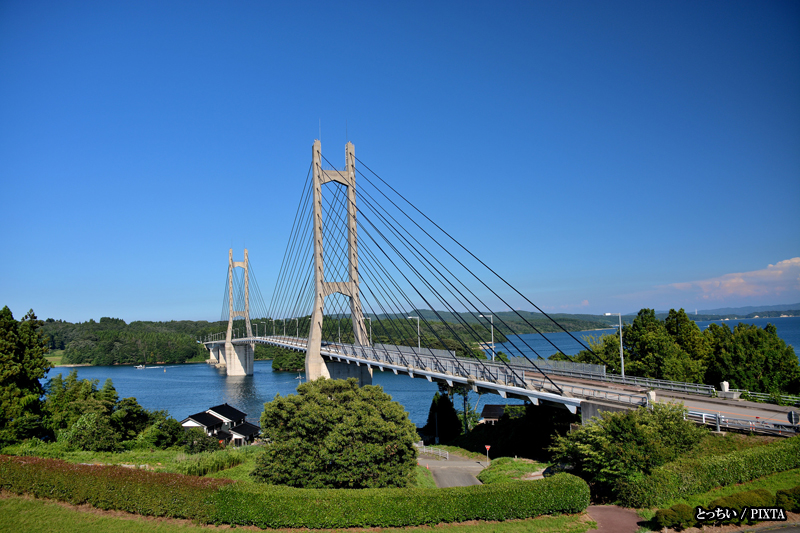
Photo for illustrative purposes
For those seeking a detour from the well-trodden path, Noto Peninsula delivers striking seascapes and a slower pace of life. Salt farms, terraced rice fields, and traditional fishing villages preserve a way of life that has endured for generations.
Highlights
- Shiroyone Senmaida rice terraces, especially dramatic during sunset. (Sadly, they were heavily damaged in the 2024 earthquake, with 80% of the fields cracked and irrigation systems compromised. Restoration work is underway, and the area still offers striking views alongside a powerful story of local resilience).
- Sosogi Coast and the “Nami-no-hana” (wave flowers) phenomenon in winter.
Practical information
- Access: Best explored by rental car for maximum flexibility
- Tip 1: Seasonal festivals include Kiriko lantern parades in summer
- Tip 2: Stay overnight in a local minshuku (Japanese style bed-and-breakfast) for deeper cultural immersion.
However, travellers should be aware that the northern parts of the peninsula (Oku-Noto), including Wajima and Suzu, were severely affected by the 2024 earthquake and are in a phase of long-term recovery. While some attractions have reopened or relocated, visible damage and infrastructure challenges remain.
Final thoughts
Ishikawa Prefecture offers a journey through time, art, cuisine, and nature—all without the crowds of Japan’s more tourist-heavy destinations. From strolling Kanazawa’s historic streets to soaking in mountain onsen and exploring the rugged Noto coast, every stop reveals another layer of this hidden gem. Whether you’re a first-time visitor or a seasoned Japan traveler, Ishikawa will leave a lasting impression.
